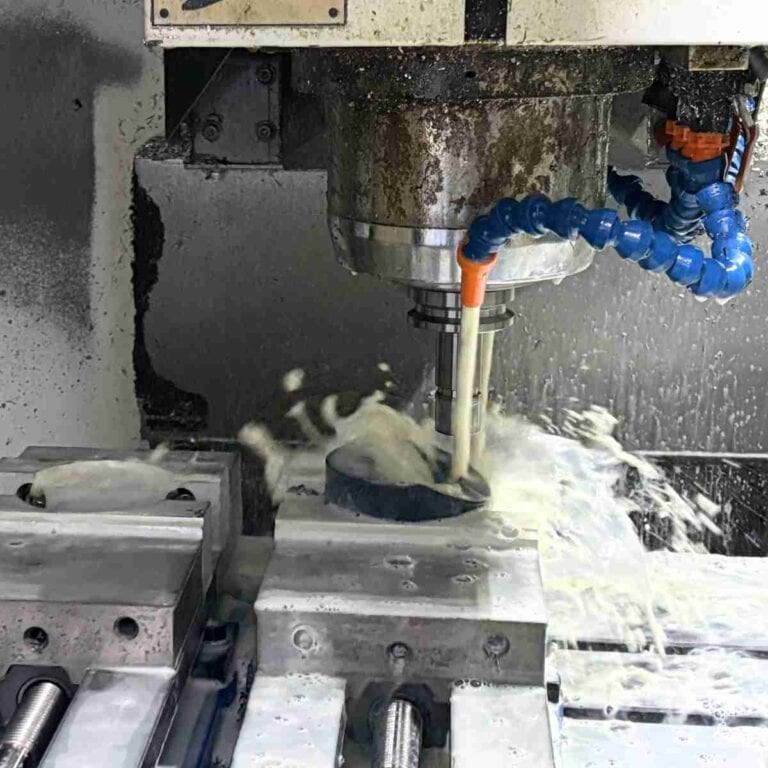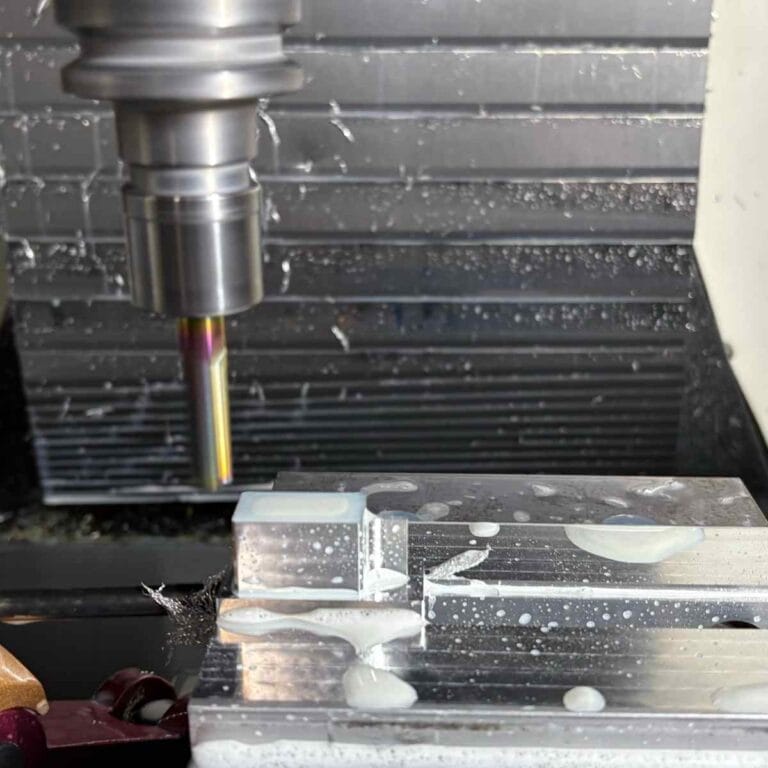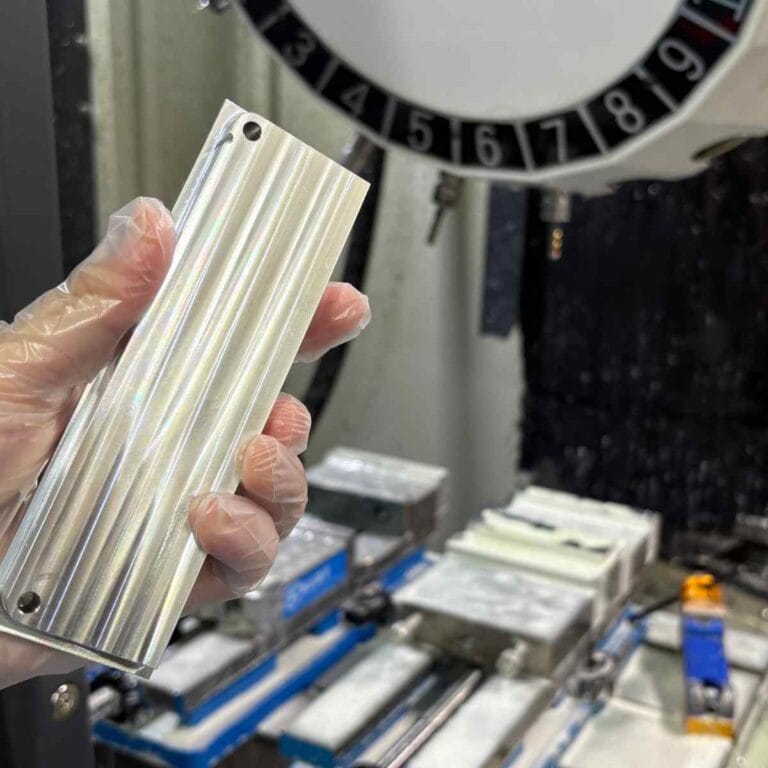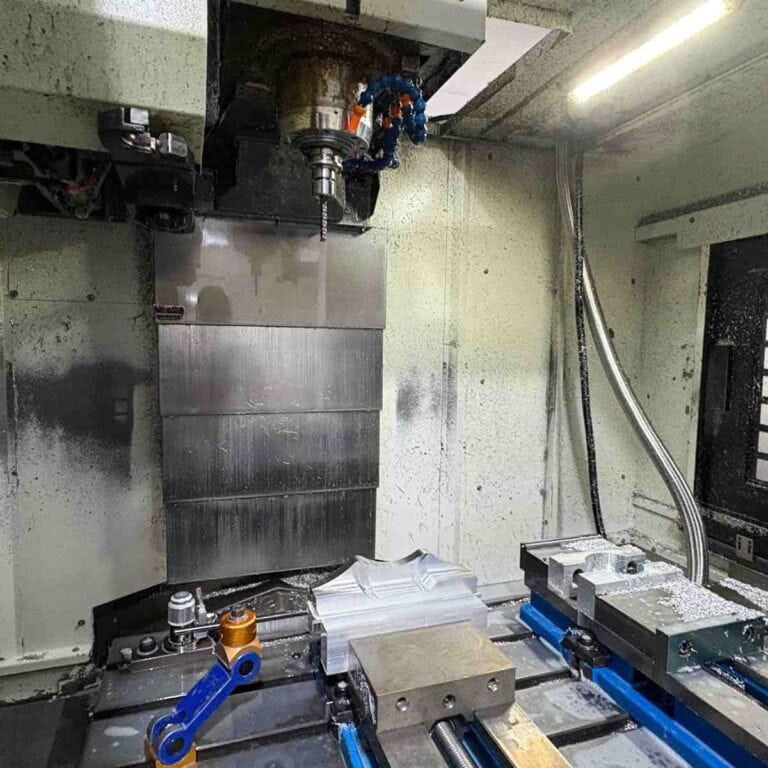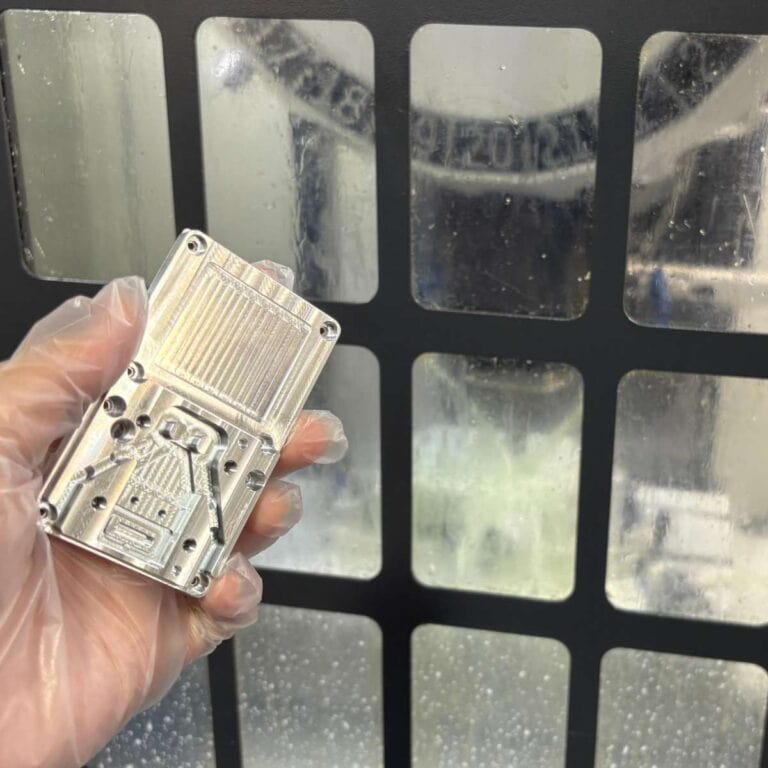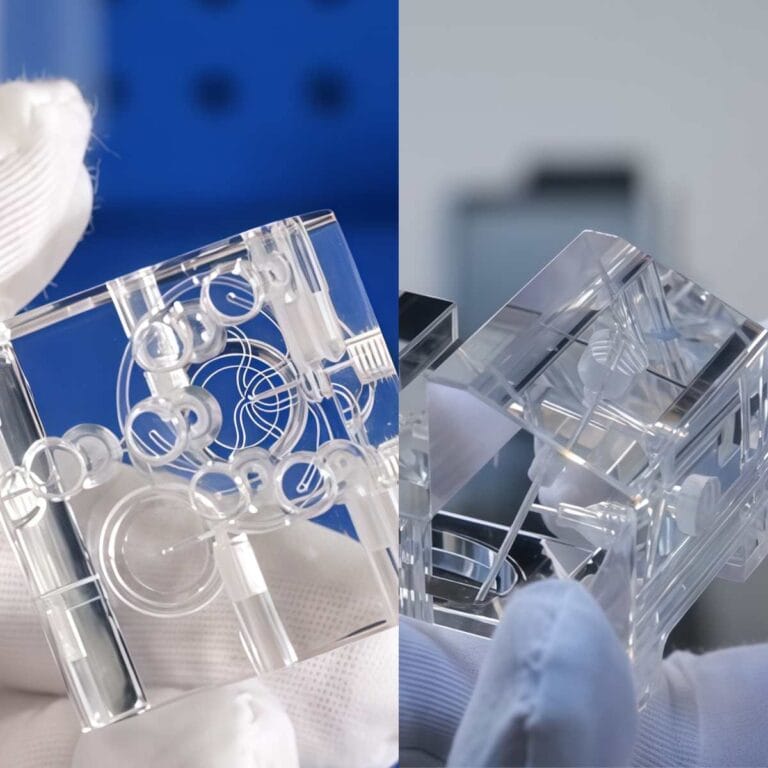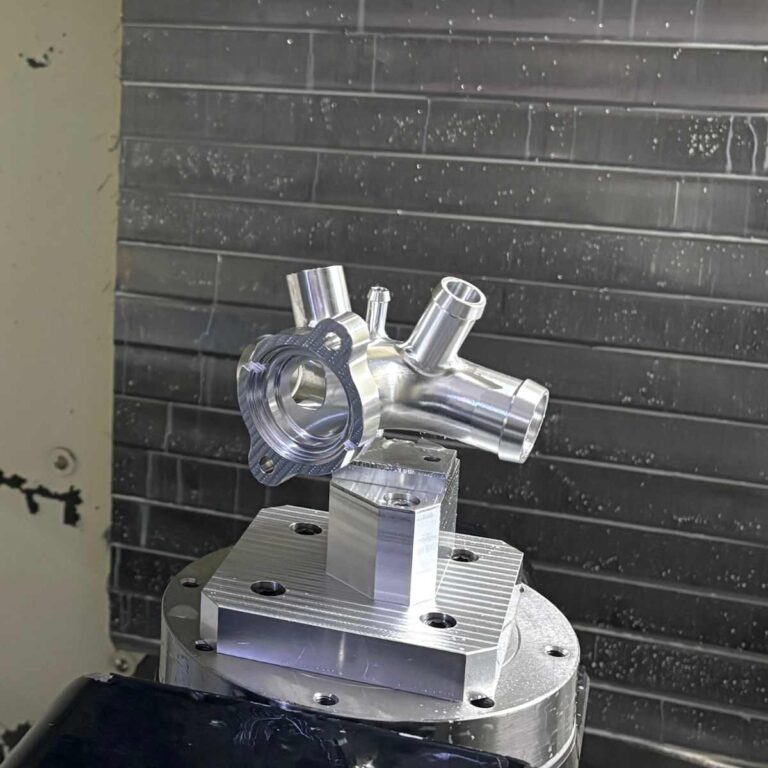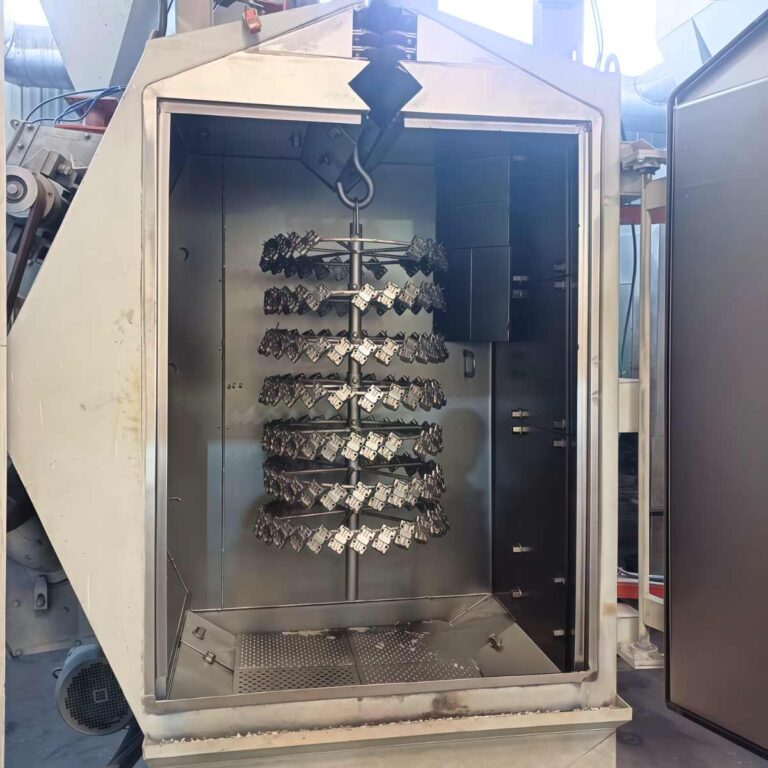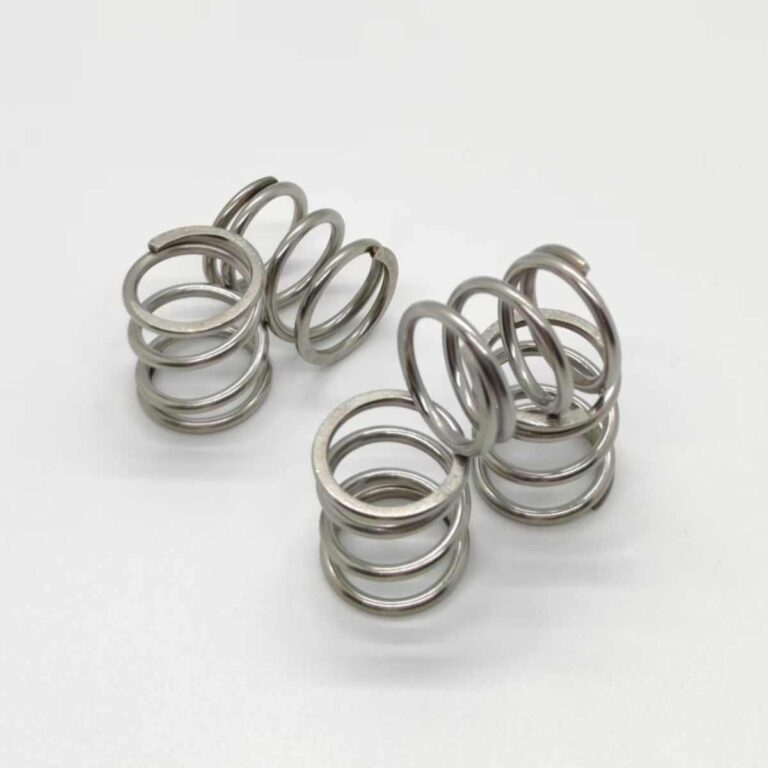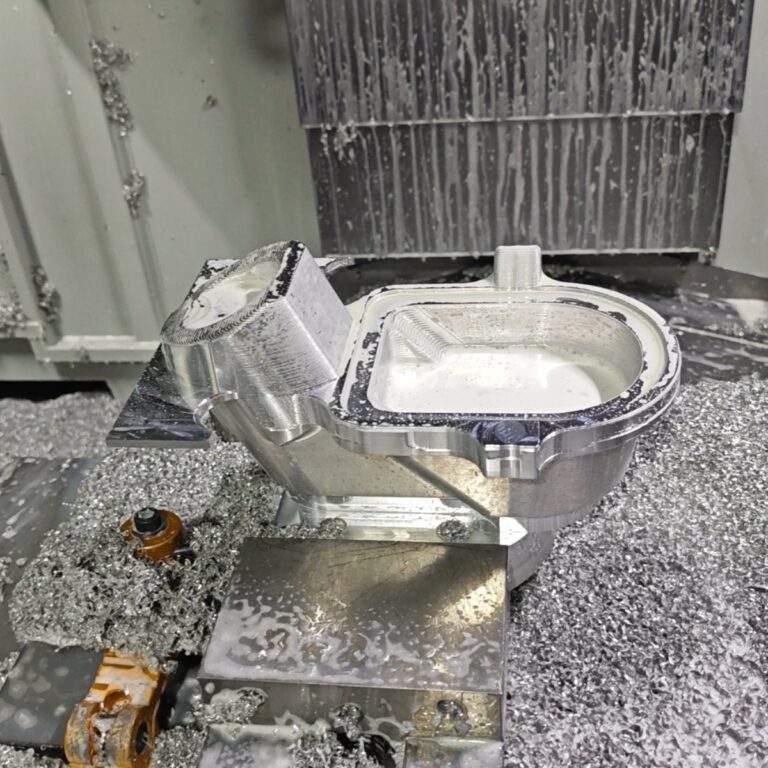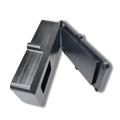Have you ever thought about how metal is everywhere and in so many different forms? From cars and home appliances to pipes in your wall and the light fixtures upstairs, it can be found there. Most metals are made from thin, flat sheets that are then transformed through sheet metal processing. This process plays an important role in many industries that rely on cutting, bending and assembling to transform simple sheets of metal into useful and beautiful objects.
What Exactly Is Sheet Metal Fabrication
Sheet metal processing involves a series of operations to plan, cut and assemble thin foils into products. The process consists of a series of steps, including cutting, bending, punching, coining, stretching and rolling. Sheet metal is usually input in the form of coils or flat rectangular blanks. The blank is made first, which is the main basis for each subsequent sheet metal processing step to improve dimensional accuracy and structural strength.
Bringing Metal to Life: Sheet Metal Fabrication
Sheet metal fabricators are like artists and engineers rolled into one, using a whole set of complex processes to shape those flat sheets. These techniques can be grouped into a few main categories:
Cutting in Sheet Metal Fabrication
The cutting process is usually the initial and foremost stage in sheet fabrication of metal. Metal sheets should be properly sized before any shaping, bending or assembly process is carried out. This is essential since it requires removal of material and sets the stage for the future process. Certain methods achieved faster projection rates while others relied on the precision of the process. The cutest used also differed based on the thickness of the material, as well as volumes required.
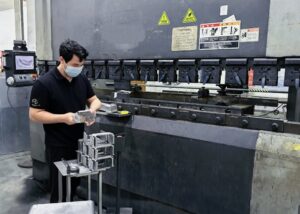
Below is a categorized overview of the primary cutting methods used in sheet metal processing:
Overview of Sheet Metal Cutting Techniques
| Category | Method | Description | Best Suited For |
| Shear Cutting | Basic Cutting | Manual or mechanical blade used to segment metal. | Simple segmentation of large sheets. |
| Shearing | Industrial shears | Fixed lower and moving upper blade; clean, fast cuts. | Fast, low-precision cutting with minimal waste. |
| Blanking | Punch and die system | Removes material to form shapes or holes. | Repetitive patterns like perforated sheets or component outlines. |
| Non-Shear Cutting | Laser Beam Cutting | High-powered laser vaporizes or melts metal; extremely accurate. | Intricate designs, thin to medium sheets, tight tolerances. |
| Non-Shear Cutting | Waterjet Cutting | High-pressure water stream (with abrasives) cuts without heat. | Heat-sensitive materials, thick sheets, smooth edges. |
| Non-Shear Cutting | Plasma Cutting | Ionized gas cuts conductive metals rapidly. | Thick sheets, structural components; less precise than lasers. |
| Machining | Rotary tools | Material is removed using rotary tools (e.g., drills, mills). | Creating complex geometries or fine features beyond basic cuts. |
| Punch Press (CNC) | Mechanized punching | High-speed and repeatable punching for holes and shapes. | Mass production with repeated patterns and high throughput. |
Choosing the Right Cutting Technique
The optimal cutting method depends on several critical variables:
- Material thickness
- Desired precision
- Edge quality requirements
- Volume of production
- Budget and operational efficiency
Fabricators and engineers must have the ability to evaluate these parameters, which helps select a cutting process that achieves accuracy, cost-effectiveness and turnaround speed while ensuring quality and dimensional strength. If you need professional guidance or services, you can contact Tirapid’s sheet metal processing experts.
2. Forming: Shaping the Metal
Unlike cutting, forming doesn’t remove material; it reshapes it. This process gives the metal its final contours and can even add strength. There are several forming techniques:
| Forming Method | Description | Typical Applications |
| Bending | Uses machines like press brakes to create angular shapes (e.g., L, U, V). | Brackets, enclosures, chassis parts, control panels. |
| Panel Bending | Automates the bending of large or complex panels using specialized equipment. | Mass production of HVAC panels, cabinets, and architectural parts. |
| Stamping | Involves high-speed presses and die sets to form consistent shapes and patterns. | High-volume production of automotive parts, metal tags, connectors. |
| Stretching | Metal is elongated over a die to form large, curved surfaces. | Car body panels, aerospace skins, domed structures. |
| Spinning | Metal is rotated and shaped by applying pressure over a mold. | Seamless round items like funnels, cones, cylinders, cookware. |
| Rolling | Material is passed through rollers to induce curvature or reduce thickness. | Cylindrical parts like tubes, pipes, and pressure vessels. |
Forming as a Structural Advantage
Forming not only enables complex geometric fabrication but also contributes to:
- Increased material strength through work hardening
- Enhanced precision in final part dimensions
- Reduction in material waste compared to subtractive methods
- High repeatability, especially with CNC-controlled equipment
3. Joining & Assembly: Putting it All Together
Sheet metal fabrication is the joining process is completed following a number of processes completed, including cutting and cutting and. It is the aim of making sure that all the pieces are securely joined to ensure a stable and functional component can be achieved physically.
Common Sheet Metal Joining Techniques
| Joining Method | Description | Typical Applications | Key Advantages |
| Welding | Uses high heat, often with filler metal, to fuse pieces into a single structure. Techniques include MIG, TIG, and spot welding. | Structural frames, machinery, enclosures, automotive components. | High strength, permanent bonds, suitable for similar metals. |
| Riveting | Mechanical fasteners (rivets) are driven through aligned holes to hold parts together. | Aircraft panels, sheet metal ducts, multi-metal assemblies. | Ideal where welding is unsuitable; joins dissimilar metals. |
| Brazing | Uses a filler metal with a lower melting point than the base metals to create strong, leak-proof joints. | HVAC components, plumbing systems, electrical enclosures. | Effective for dissimilar metals and precision joints; lower heat required. |
| Adhesive Bonding | Industrial adhesives provide chemical bonding between surfaces. | Electronics housings, automotive interiors, lightweight panels. | Uniform stress distribution, aesthetic finish, joins dissimilar or delicate materials. |
By combining a variety of refined parts and assembling them, you can complete the final process. It is important to keep in mind that regardless of the quantity of components in the end assembly, it’s the accuracy with which the joiner’s method is used that decides the efficiency as well as the strength and endurance of the whole assembly.
What Metals Do Fabricators Use
A successful sheet metal work assignment is contingent on the materials that are used. Tirapid is among the top respected service providers in sheet metal fabrication, Tirapid is aware of the various degrees of properties of mechanical, corrosion and environmental elements, as well as the workability of various metals.
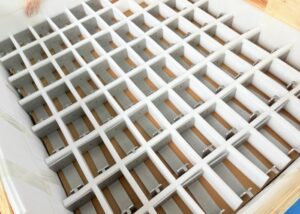
Common Metals in Sheet Metal Fabrication
| Metal | Key Characteristics | Typical Applications |
| Steel | High strength, excellent machinability and weldability; available in mild, cold-rolled, and hot-rolled grades. | Construction parts, brackets, structural supports, industrial machinery. |
| Stainless Steel | Excellent corrosion resistance, strong, hygienic, and durable. | Kitchen equipment, medical devices, food processing tanks, cleanroom enclosures. |
| Aluminum | Lightweight, corrosion-resistant, highly formable, and conductive. | Aerospace panels, automotive frames, electronics housings, architectural cladding. |
| Copper | Superior electrical and thermal conductivity; antimicrobial by nature. | Electrical wiring, busbars, HVAC components, hospital fixtures. |
| Brass | Aesthetic copper-zinc alloy with gold-like appearance; corrosion-resistant. | Decorative trim, fittings, musical instruments, plumbing components. |
| Bronze | Copper-tin alloy known for hardness, wear resistance, and marine-grade durability. | Bearings, bushings, marine hardware, statues, industrial gears. |
| Galvannealed Steel | Zinc-coated steel with enhanced paintability and corrosion resistance. | Automotive body panels, appliance housings, outdoor enclosures. |
Where Do We See Sheet Metal
Sheet fabrication of metal is an essential procedure in modern manufacturing, engineering and infrastructure improvement. Due to its low cost as well as its structural flexibility and flexibility, sheet metal is used in nearly all major industries. While it’s often not seen the impact it has on society is vast and vital to daily functioning.
Common Applications of Sheet Metal by Industry
| Industry | Applications | Functionality |
| Construction | Roofing, wall cladding, support beams, door/window frames, HVAC ducting. | Structural integrity, weather resistance, ventilation systems. |
| Automotive | Body panels, chassis components, brackets, reinforcements. | Lightweighting, structural performance, safety features. |
| Aerospace | Aircraft skins, fuselage panels, engine covers, internal frames, satellite structures. | Aerodynamic form, corrosion resistance, weight optimization. |
| Consumer Goods & Electronics | Enclosures for appliances (ovens, refrigerators), electronics (laptops, phones), and furniture frames. | Heat shielding, aesthetic finish, compact housing. |
| HVAC Systems | Ductwork, grilles, diffusers, air handler panels. | Efficient airflow control and thermal regulation. |
| Industrial Equipment | Machine frames, guards, housings, conveyor parts, agricultural tools. | Equipment protection, durability, ease of maintenance. |
| Packaging & Storage | Food cans, beverage containers, shipping crates, industrial storage tanks. | Sterile packaging, strength for transportation and storage. |
Is Sheet Metal Fabrication Always the Best Choice(Pros and Cons)
Sheet metal fabrication is a widely utilized manufacturing technique, which is highly acclaimed for its adaptability, sensitivity as well as cost-efficiency. Like all production methods, it has inherent weaknesses and strengths. An understanding that is balanced of the factors involved is vital to choosing the best method for a specific industrial or engineering task.
Advantages and Disadvantages of Sheet Metal Fabrication
| Pros | Description |
| Customization | Components can be tailored precisely to individual project specifications. |
| Versatility | Compatible with a wide variety of metals and suitable for multiple applications and part sizes. |
| High Precision | CNC machinery enables tight tolerances and repeatable accuracy. |
| Cost-Effective for Medium to Large Runs | Economical for small batches and scalable for high-volume production. |
| Quick Turnaround Times | Streamlined processes allow for efficient project completion, especially with modern equipment. |
| Prototyping Friendly | Suitable for low-volume, iterative testing prior to mass production. |
| Durability and Strength | Finished parts often exhibit high structural integrity and long-term reliability. |
| Scalability | Capable of supporting both small and industrial-scale production runs. |
| Reduced Material Waste | Precision cutting techniques minimize excess material usage. |
| Cons | Description |
| High Initial Setup Costs | Custom tooling and programming can involve significant upfront investment. |
| Design Complexity Limitations | Certain complex geometries or tight radii may not be feasible with standard forming methods. |
| Post-Processing Requirements | Parts may require additional finishing (e.g., deburring, coating), increasing time and cost. |
| Labour Intensity | Skilled labor is often required for setup, operation, and quality control. |
| Multiple Operations Required | Projects often involve a series of steps (cutting, forming, joining), potentially lengthening lead times. |
In Conclusion
The fabrication of sheet metal is a vital component in modern manufacturing. It’s utilized in almost all the industries.
Knowing the basics of cutting, pressing, and joining in along with material selections as well as application insights helps engineers, product designers and procurement specialists to make more informed, performance-based choices. The process of bringing your ideas to life is more than just technical expertise. It requires a trusted manufacturing company.
Utilizing state-of-the-art technology, precision CNC capability for machining, as well as vast experience in customized sheet metal fabrication Tirapid will provide an all-encompassing solution to your particular needs, from single prototyping, to large-scale production runs!

